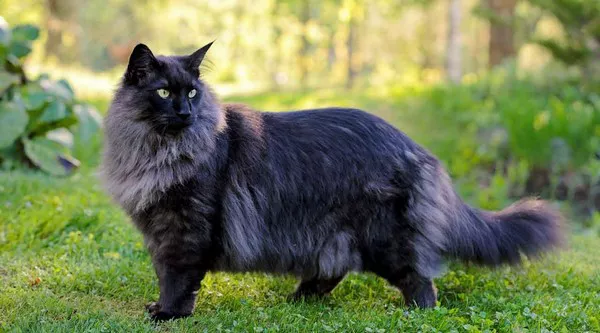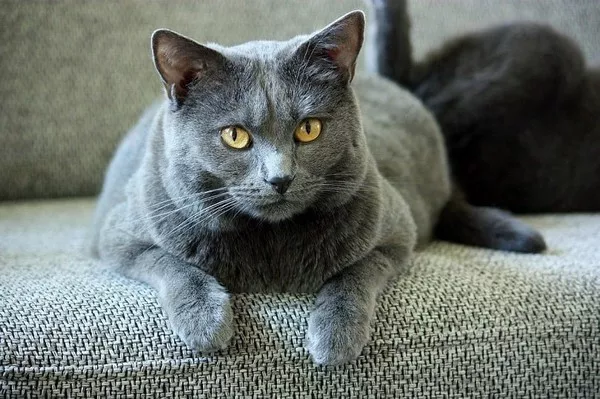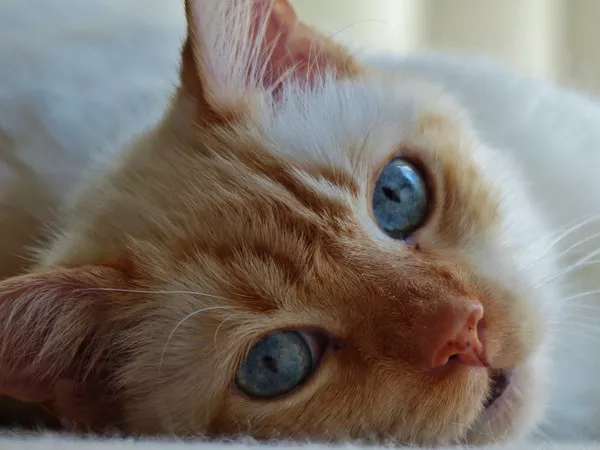The Norwegian Forest Cat, with its striking appearance and regal demeanor, has long been admired for its beauty and grace. While the breed is often associated with classic tabby patterns and earthy tones, many enthusiasts wonder: can Norwegian Forest Cats be black? In this comprehensive guide, we’ll delve into the genetic factors that determine coat color in Norwegian Forest Cats, explore the possibility of black-coated individuals within the breed, and shed light on the fascinating world of feline genetics and color variations.
Understanding Norwegian Forest Cat Genetics: Decoding Coat Colors
Before we delve into the question of whether Norwegian Forest Cats can be black, it’s essential to understand the genetic factors that determine coat color in cats. Coat color in cats is determined by a complex interplay of genes, with multiple genetic loci influencing the expression of specific colors, patterns, and markings. Here’s a brief overview of the genetic mechanisms involved in coat color inheritance:
Genetic Loci and Alleles:
Agouti Locus (A): The agouti locus determines whether a cat’s fur will display banded or solid coloration. Cats with the dominant allele (A) exhibit banded (tabby) patterns, while those with the recessive allele (a) display solid coloration.
Extension Locus (E): The extension locus determines the distribution of pigment (eumelanin) in a cat’s fur. Cats with the dominant allele (E) display full pigmentation, while those with the recessive allele (e) exhibit diluted (or “dilute”) coloration.
Dilution Locus (D): The dilution locus influences the intensity of pigmentation in a cat’s fur. Cats with the dominant allele (D) display normal pigmentation, while those with the recessive allele (d) exhibit diluted (or “dilute”) coloration.
Coat Color Expression:
Basic Colors: The primary colors found in cats include black, chocolate, cinnamon, and red (orange). These colors serve as the foundation for more complex patterns and variations seen in different breeds.
Modifiers and Patterns: Various modifiers and patterns, such as tabby stripes, tortoiseshell (calico), and pointed (Siamese) patterns, further influence coat color and appearance, creating a diverse array of color combinations and markings.
Exploring Coat Color Variations in Norwegian Forest Cats
Now that we’ve established the genetic framework for coat color inheritance in cats, let’s turn our attention to the Norwegian Forest Cat and its potential for black coat coloration. While Norwegian Forest Cats are typically associated with classic tabby patterns and earthy tones, including shades of brown, gray, and cream, it is indeed possible for them to exhibit black coat coloration under certain circumstances.
Tabby Patterns and Variations:
Classic Tabby (Mackerel) Pattern: The classic tabby pattern, characterized by bold, distinct stripes running along the cat’s body and tail, is one of the most common coat patterns seen in Norwegian Forest Cats. While classic tabby cats often display shades of brown (black), gray, and cream, it is possible for them to exhibit solid black stripes against a lighter background.
Ticked Tabby (Agouti) Pattern: The ticked tabby pattern, also known as the agouti pattern, is characterized by individual hairs displaying alternating bands of light and dark coloration. Norwegian Forest Cats with this pattern may exhibit a range of colors, including black, brown, and gray, with the black variant displaying solid black ticking against a lighter base color.
Solid Colors and Dilution Effects:
Solid Black Coat Coloration: While Norwegian Forest Cats are not typically associated with solid black coat coloration, it is theoretically possible for them to exhibit this coloration under certain genetic conditions. Cats with the recessive “a/a” genotype at the agouti locus and the dominant “D/D” genotype at the dilution locus will display solid black coloration, as the agouti gene is suppressed, and the dilution gene allows for full pigmentation.
Dilution Effects: In some cases, Norwegian Forest Cats may exhibit diluted black coat coloration, commonly referred to as “blue” in the cat fancy. This occurs when the “d/d” genotype at the dilution locus is present, resulting in a lighter, bluish-gray hue to the cat’s fur.
Breeding Practices and Color Preservation
While Norwegian Forest Cats can indeed exhibit black coat coloration, breeders typically prioritize preserving the breed’s traditional coat patterns and colors, including classic tabby patterns and earthy tones. As a result, solid black Norwegian Forest Cats may be less common within the breed compared to other coat colors and patterns.
Conclusion: Embracing the Diversity of Norwegian Forest Cat Coat Colors
In conclusion, while Norwegian Forest Cats are not commonly associated with solid black coat coloration, it is indeed possible for them to exhibit this coloration under certain genetic conditions. The complex interplay of genes and modifiers involved in coat color inheritance can result in a diverse array of colors and patterns within the breed, including classic tabby patterns, diluted colors, and solid black variants. Whether your Norwegian Forest Cat sports traditional tabby stripes or displays a rare solid black coat, each individual cat is a unique and beautiful representation of this majestic breed’s rich genetic heritage and legacy.
























